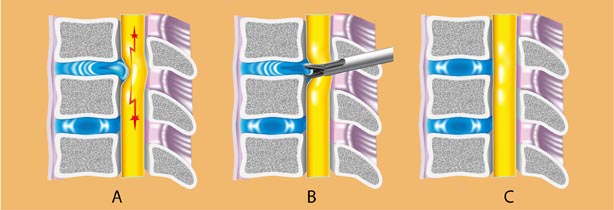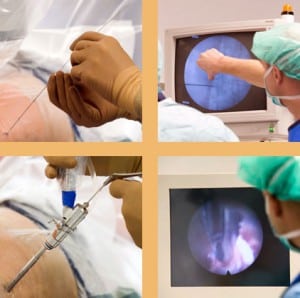Endoscopic disc surgery / endoscopic spine surgery
Endoscopic spine surgery is a closed percutaneous method which has started a new age of slipped disc treatment. This gentle, comfortable and revolutionary treatment is used to cure many kinds of herniated discs and chronic back pain. It can even be increasingly employed to remove a stenosis of the nerve root canal (so-called foraminal stenosis). Important prior to endoscopic disc surgery is a reliable diagnosis poving which disc causes the complaints. This diagnostic foundation can be achieved, for example, by using MRI (at Beta Klinik we use an open MRI system with 1.5 T) or discography.
Without any damage of muscles and ligaments, almost every slipped disc in lumbar spine can be treated with endoscopic spine surgery. Instead of exposing the spine with an open surgery access, natural, osseous openings of the spine are used for the insertion of the endoscope. This is possible because the instrument has only a diameter of 7 mm.
Illustrations A-C explain the endoscopic disc surgery. The herniated disc compresses nerve tissue and causes complaints like pain or neurological deficits (A). The disc herniation is gently removed by minute instruments through a small endoscope (B). As a result, the nerve tissue is no longer compressed but relaxed, and, thus, the complaints decrease.




